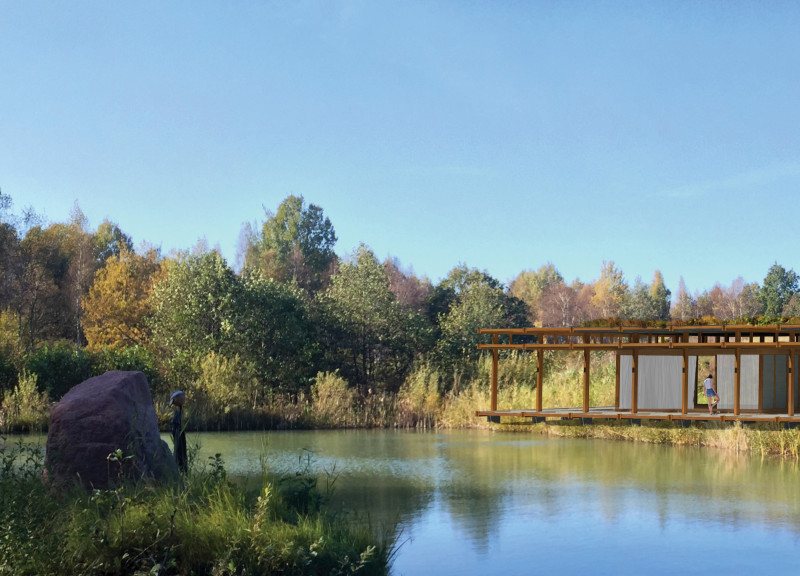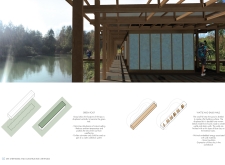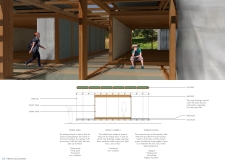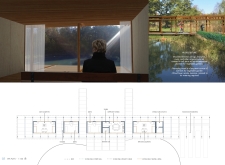5 key facts about this project
At its core, the Blue Clay Country Spa functions as a retreat for individuals seeking relaxation and rejuvenation. The careful layout includes interconnected spaces that allow for seamless movement, encouraging interaction among visitors while maintaining a sense of privacy. Each area within the spa is designed to maximize views of the landscape, reinforcing the idea that the natural environment is an integral component of the wellness experience. This spatial configuration not only enhances the overall ambiance but also fosters a feeling of tranquility, essential for a spa setting.
The architects employed a variety of materials that reflect both the local context and sustainability goals. Wood serves as a primary structural element, invoking warmth and creating an organic atmosphere within the spa. The traditional wattle and daub technique is utilized for wall construction, merging a natural clay layer with woven wooden frames, thereby ensuring thermal efficiency and minimizing ecological impact. Additionally, the incorporation of blue clay, sourced locally, enriches the design while aligning with the environment.
A notable design feature is the implementation of a green roof, which not only enhances the aesthetic appeal but also contributes to the building's overall sustainability. The green roof functions as a thermal regulator, helping to manage indoor temperatures throughout the seasons while simultaneously facilitating rainwater management. This thoughtful approach to water conservation reveals a deep understanding of ecological imperatives within the architectural design process.
The Blue Clay Country Spa also incorporates innovative elements such as retractable storm shells and privacy screens. These features provide dynamic responses to environmental conditions, allowing users to adapt the spaces according to personal comfort. This level of adaptability reflects a sophisticated understanding of user needs and climatic variations, setting a precedent for future projects that prioritize both resilience and flexibility.
Furthermore, the inclusion of hugelkultur gardening practices demonstrates a commitment to local ecological systems and sustainable agriculture. By enriching the surrounding soil and providing food resources, the design not only supports human health but also enhances the local ecological footprint. This multi-faceted approach underscores the architects' aim to align contemporary wellness needs with nature.
In exploring the intricate details of the Blue Clay Country Spa, one can appreciate how each design choice serves a purpose, contributing to a cohesive experience that encourages relaxation and rejuvenation. From the tactile quality of materials to the fluid spatial configurations and sustainable practices, every aspect of the project reflects a sincere dedication to bridging architecture with the environment. For those interested in a deeper exploration of this architectural endeavor, reviewing architectural plans, sections, designs, and ideas will provide further insight into the nuanced considerations that define this remarkable project.


























